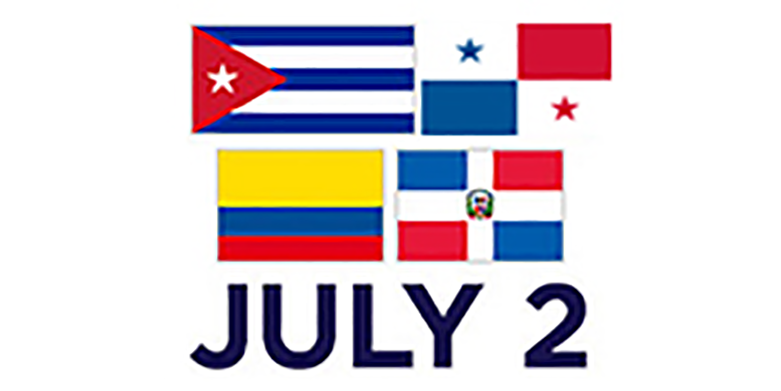ST. PETERSBURG -- Since the time he took the job in November, general manager and executive vice president Mike Elias has made establishing the Orioles’ presence in Latin America a priority. He and new senior international scouting director Koby Perez spent the months since laying the groundwork for what they hope grows into a strong foothold in the international market, after years of the O's being mostly inactive there.
Tuesday brought the first fruits of those efforts. Baltimore announced 27 international signings, the class highlighted by outfielder Luis Gonzalez, left-handed pitcher Luis Ortiz and shortstop Leonel Sanchez, all of the Dominican Republic.
Ortiz and Sanchez received bonuses of $400,000, while Gonzalez received $475,000.
Gonzalez is a left-handed hitter who can play all three outfield positions and who the Orioles feel could grow into an impact power bat. Ortiz’s fastball exceeds 90 mph, and he also features a changeup and a curve. Sanchez is an athletic middle infielder the club hopes can develop power as he ages.?
Baltimore’s international class also includes Dominican shortstop Roberto Martinez, catcher Kenny Baez, right-hander Edgar Portes and Venzuelan righties Raul Rangel and Moises Chance.
“This July 2 is a big day for our franchise,” Elias said in a statement. “These young players from all parts of Latin America will bolster our burgeoning farm system and jumpstart the continual flow of talent we are building. Today is only the beginning of our efforts, as we will continue to sign more players throughout the 2019-20 signing period. Our International Scouting staff has already begun laying the groundwork for future classes.”
The players signed Tuesday came from five countries: the Dominican Republic, Venezuela, the Bahamas, Aruba and Colombia. The Orioles did not sign a player from Cuba (well-touted Cuban shortstop Yolbert Sanchez, whom the O's scouted this winter and were seen as favorites to sign, signed with the White Sox). They did not hand out a seven-figure bonus or sign any Top 30 Prospects available per MLB Pipeline. Most -- if not all -- were largely spoken for before Elias and Perez came on board this winter.
Still, their efforts signal a new direction for a franchise that largely eschewed the international market in the past. Elias recently called this class “the largest signing period the Orioles have ever had.”
“We are excited about the round of talent we were able to bring in with this first group of signings,” Perez said in a team statement. “Everyone in the organization hit the ground running after our department was put together, and it’s a testament to their hard work that we were able to sign the quality group of players joining us today. We look forward to continuing to grow the relationships we’ve established in the Dominican Republic and other countries for years to come.”
According to the rules established by the Collective Bargaining Agreement, clubs like the Orioles that receive a Competitive Balance Pick in Round B of the Rule 4 Draft have the most money with a pool of $6,481,200 for spending on international prospects, while clubs that receive a Competitive Balance Pick in Round A of the Rule 4 Draft receive the second most at $5,939,800.
Teams are allowed to trade as much of their international pool money as they would like, but can only acquire 60 percent of another team's initial pool amount. Additionally, signing bonuses of $10,000 or less do not count toward a club's bonus pool, and foreign professional players who are at least 25 years of age and have played in a foreign league for at least six seasons are also exempt.
Under the previous system, teams were penalized for exceeding their bonus pools with consequences that ranged from taxes on their spending to the maximum penalty, which was being prohibited from signing any prospect for more than $300,000 during the next two signing periods. That’s no longer the case and there are no longer penalties. Teams can only spend their allotted bonus pools and the monies acquired via trade.
All told, Baltimore spent upwards of $2.5 million of the nearly $7 million pool it stockpiled last summer under then-GM Dan Duquette, the hope then being the Orioles would use it to compete for top talents like Victor Victor Mesa and Sandy Gaston. Both ultimately ended up signing with other clubs, when the O's front office was in transition. Elias hired Perez in January and continuously siphoned the pool to supplement other areas, using it to acquire Minor League depth and big league pieces like Dwight Smith Jr., Keon Broxton and Tom Eshelman.
Expect the Orioles to be busy in the future. Many of the top international prospects in this year’s class, and even some in the 2020-21 class, had already picked a team when Perez took over in early January. The club shifted its focus to finding late bloomers for the current period while also scouting future classes. The O's are also planning to broaden their foothold in Latin American with personnel hires and infrastructure initiatives as the year progresses.

